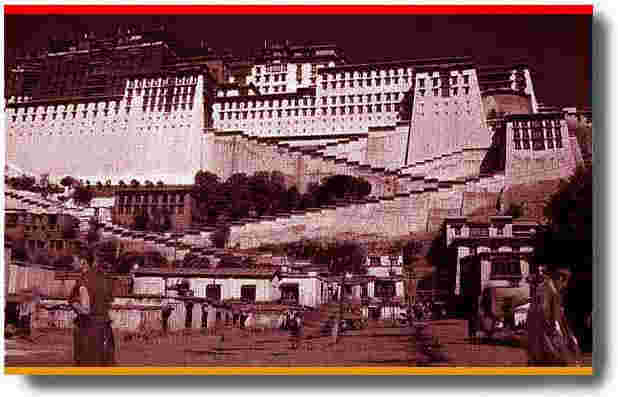
Tibet, one of the happiest lands on the Earth, has been traditionally ruled by the Dalai Lamas, the highest institution of reincarnation in the whole of Central Asia. It was always an independent, peaceful state until the invasion by the People's Liberation Army of China in 1949. But to the outside world, Lhasa, the Tibetan capital, was always a Forbidden City. "For many Tibetans material life was hard, but they were not the victims of desire; and in simplicity and poverty among our mountains, perhaps there was more peace of mind than there is in most of the cities of the world," Dalai Lama quotes in his autobiography, My Land and My People.
A Chinese tourist poses in front of a MIG fighter
The Chinese occupation of Tibet has entirely changed the life and lifestyles of the Tibetans for the worse. During its invasion, the Chinese army imprisoned hundreds of Tibetans for their political and religious activities, while monks and nuns were tortured and killed for dreaming of an Independent Tibet and for aligning with His Holiness the Dalai Lama. Today, political prisoners are being routinely attacked and nuns being raped at Chinese prisons. There is no freedom; even the Dalai Lama's photographs are banned. According to a UN report, "The Chinese occupation of Tibet has been characterised by acts of murder, rape and arbitrary imprisonment; torture and cruel, inhuman and degraded treatment of Tibetans on a large scale. The number of Tibetans killed after the Chinese occupation -- a period marked by torture and starvation -- now exceeds a million. According to a document captured by the guerrillas fighting the Chinese army, 87,000 deaths were recorded in Lhasa between March 1959 and September 1960. More than 6,000 monasteries, their belongings -- the priceless jewels of Tibetan culture, precious Thangka paintings and other valuable documents were destroyed by the Chinese army." Once a peaceful buffer state between India and China, Tibet has now been transformed into a strong military base with 17 secret radar stations, 14 military airfields, 5 missile bases situated near the Indian border and a secret nuclear power station near Lake Ko-Ko Nor. Of late, China has launched a 'Final Solution' — a systematic state-sponsored movement and encouragement of ethnic Chinese into Tibet — to overwhelm and expunge the Tibetan nation. Besides, it has embarked upon a three-year mission to promote atheism among Tibetan Buddhists as "the key to economic progress". China's sustained, brutal attacks have resulted in a mass exodus of Tibetans to India. Over the years, thousands of Tibetans have taken dangerous, heart-breaking journeys over the Himalayas to enter India where they see a ray of hope. They dream of a more meaningful life and free education on their country, its culture, language and religion. Today they all have only one hope, one dream and one voice. A free, independent Tibet. |